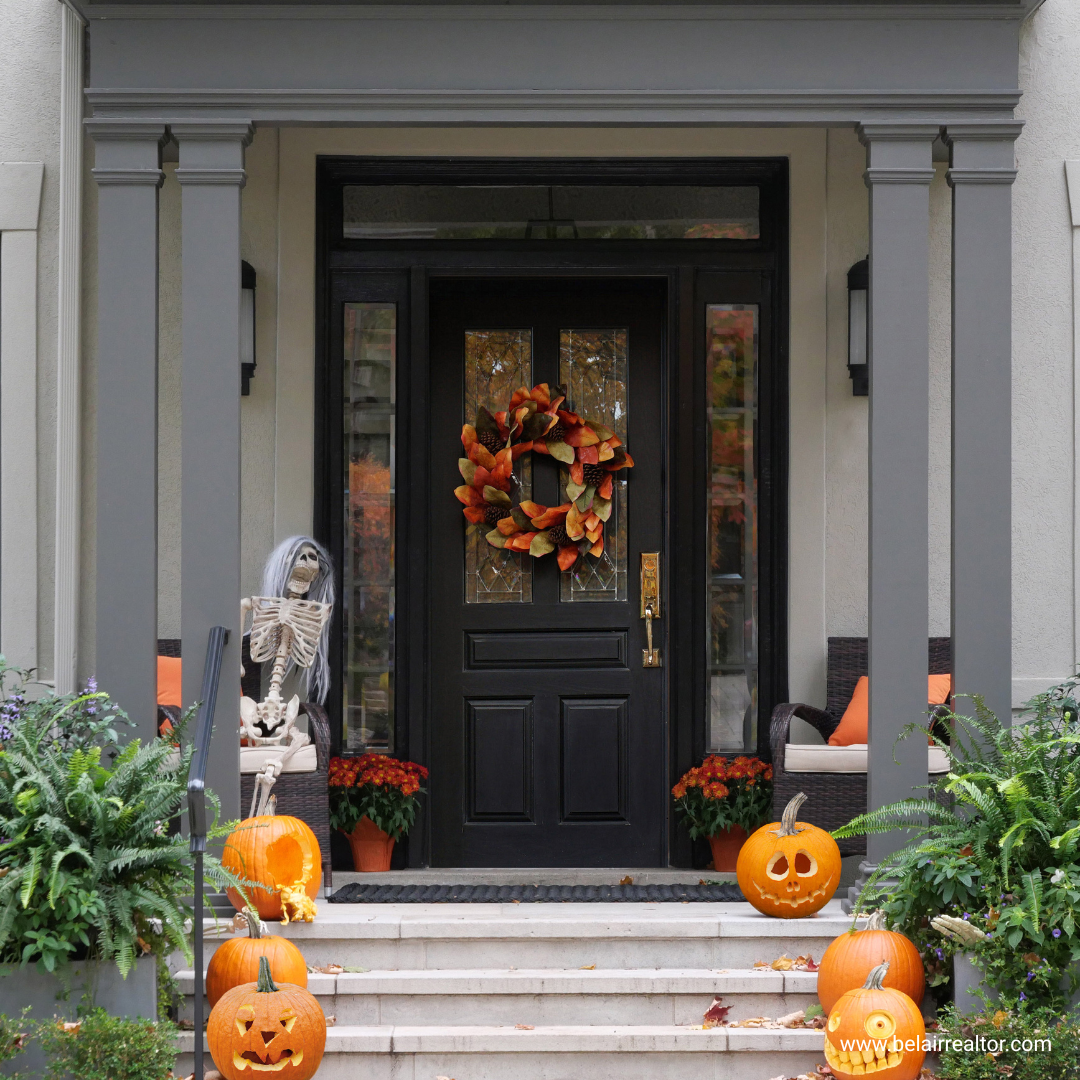Should You Decorate for Halloween (or Any Holiday) When Your Home Is on the Market? Keep It Minimal.
Listing photos live longer than you think
Most buyers discover homes online first. Your photos get syndicated across multiple sites, resurfaced in email alerts, and shared on social media—for weeks or months. A giant inflatable spider or a mantle full of jack‑o’‑lanterns stamps your photos as “October,” which becomes a problem when someone is searching in December or January. Seasonal imagery can make a home look stale (“Has this been sitting since fall?”) even if you’ve priced correctly and had steady activity. Neutral, seasonless staging keeps your listing feeling fresh whenever a buyer sees it. 
Décor should never compete with architecture
Thoughtful staging draws the eye to square footage, natural light, flooring, and flow. Holiday décor—especially bold colors, busy patterns, or themed vignettes—adds visual clutter that competes with the actual asset. In photos, the human eye goes to the brightest or most detailed element. If that’s a cluster of orange lights or a life-sized skeleton, buyers won’t notice the coffered ceiling or new window trim you invested in.
Avoid polarizing themes and personal signals
Holidays can be deeply personal. Overtly spooky items, overtly religious symbols, or inside‑joke decorations can inadvertently alienate or distract. The goal is to help buyers picture their life in the home, not yours. Keep personal and polarizing items out of the frame so your rooms read as calm, universal, and move‑in ready.
Curb appeal matters—safety does too
Massive lawn inflatables, cords across walkways, flickering lights, candles, and fog machines don’t just distract; they can create tripping or fire hazards during showings and open houses. In autumn and winter, when daylight is shorter and leaves are underfoot, it’s smarter to keep pathways clear, lighting simple, and porches tidy. Clean, uncluttered exteriors photograph better and welcome buyers safely.
A better approach: “seasonal, not themed”
If you love celebrating holidays, aim for small, natural, and easily removable touches—things that read as seasonal ambiance rather than a holiday theme. Think:
- A simple, neutral wreath (greenery or wheat) rather than a Halloween‑specific design
- One or two uncarved pumpkins or gourds on the porch (swap them out if they age)
- Fresh doormat and a swept, leaf‑free entry
- A cozy throw and textured pillows in muted tones inside
- A bowl of polished apples or white flowers on the kitchen island
These accents suggest warmth without timestamping the photo. They also remove quickly for photography day.
Photography game plan
- Shoot first, decorate second. Schedule professional photos before any seasonal items go up. That way, every image is season-agnostic and usable for months.
- Walk the frame. Before the photographer clicks, do a quick sweep: remove porch pumpkins, hide themed dish towels, take down door signs, and tuck away countertop clutter.
- Keep a “showing kit.” If you add minimal décor after photos, store a bin in the garage with a few neutral items you can set out and remove quickly for each showing.
- Resist re‑shoots. Re‑photographing a home after every holiday is impractical and confusing for buyers. One clean, consistent photo set is the goal.
What about other holidays?
The same principles apply year‑round. For winter, choose greenery over specific holiday icons. In spring, fresh branches beat pastel bunnies. In summer, skip patriotic banners in favor of a neat patio, clean cushions, and a tidy grill area. You can nod to the season without turning your home into a themed set.
Bonus: minimal décor simplifies the rest of the move
Less décor means fewer boxes to store, fewer nails in walls to patch, and fewer last‑minute tasks before closing. It keeps closets, the garage, and the attic looking spacious—key areas buyers scrutinize for storage.
Quick do’s and don’ts
Do:
- Prioritize neutral, natural, and simple accents
- Keep walkways and entry points clear and well‑lit
- Remove any seasonal items before photography
- Maintain tidy landscaping and fresh mulch for curb appeal
Don’t:
- Use large inflatables, flashing lights, or sound effects
- Display overtly themed or polarizing décor
- Let pumpkins or wreaths linger past their prime
- Block architectural features (fireplaces, built‑ins, windows) with decorations
The bottom line
When your home is on the market, every decision should support a faster sale at the best price. Heavy holiday decorating works against that goal by timestamping your photos and diverting attention from the property itself. Keep it minimal, stick to season‑neutral touches, and let your home’s features take center stage—no matter what month a buyer discovers it online.
If you’d like a quick, room‑by‑room staging checklist (plus what to remove before your photographer arrives), I’m happy to share one. In the meantime, when in doubt: less is more.
